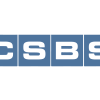Using AI for Effective RegTech
TESTIMONY OF MELANIE HALL COMMISSIONER
MONTANA DIVISION OF BANKING AND FINANCIAL INSTITUTIONS
ON BEHALF OF THE
CONFERENCE OF STATE BANK SUPERVISORS TO THE
HOUSE FINANCIAL SERVICES COMMITTEE ARTIFICIAL INTELLIGENCE TASK FORCE OF THE
U.S. HOUSE COMMITTEE ON FINANCIAL SERVICES HEARING ON
“KEEPING UP WITH THE CODES – USING AI FOR EFFECTIVE REGTECH” MAY 13, 2022
Introduction
Thank you, Chairman Foster, Ranking Member Gonzalez and distinguished members of the Task Force. My name is Melanie Hall. I am the Commissioner of the Montana Division of Banking and Financial Institutions and serve as the Chair of the Conference of State Bank Supervisors’ (CSBS) Board of Directors. CSBS thanks the House Financial Services Committee Artificial Intelligence Task Force for convening this important hearing entitled “Keeping Up with the Codes – Using AI for Effective RegTech.”
It is my pleasure to testify on behalf of CSBS on how the state system uses technology for financial supervision today and how we see that shaping financial supervision in the future through Networked Supervision, our design to create a federated state system through greater use of technology and enhanced state-to-state and state-to-federal partnerships.
CSBS is the national organization of state banking and financial regulators that educates and informs policy makers, consumers and other stakeholders about issues affecting states’ banking and financial services markets. Representing a network of financial regulators in all 50 U.S. states and territories, CSBS also provides a range of professional development and training programs and serves as a forum for collaborating and developing policies that strengthen financial regulation for the benefit of consumers and communities. CSBS supports state regulators in their mission to ensure safety and soundness; protect consumers; promote economic growth; and foster innovative, responsive supervision.
State regulators charter and supervise approximately 3,981 banks with more than $7.15 trillion in combined assets, representing 79% of all U.S. banks, half of all small business lending and two-thirds of all agriculture lending in America. State regulators also are the primary licensing authority for nonbank financial services providers, including mortgage lenders, money transmitters and consumer lenders.
CSBS, on behalf of state regulators, operates the Nationwide Multistate Licensing System (NMLS), a regulatory licensing platform that launched in 2008 and is now used for state- licensed nonbank financial services providers in the money services, mortgage, consumer finance and debt industries. In the mortgage space, for example, all 579,000 mortgage loan originators operating in the United States are licensed or registered in NMLS. CSBS continues to enhance its technology platforms as states identify and develop new ways to work together and improve their supervisory capabilities. Two years ago, we launched the State Examination System (SES), an online platform that connects state agencies and the companies they supervise in the examination process.
Technology has been an important part of the state system’s evolution and will continue to play a critical role as financial transactions become faster and more complex. To that end, CSBS is focused on finding new and improved ways for our data, technology and analytical products to help state regulators mitigate risk and protect consumers from bad actors. In addition, states are focused on building the regulatory system of the future through Networked Supervision where technology platforms and data analytics allow 50+ state financial agencies to operate as one seamless supervisory network. We appreciate the opportunity to talk about how we are using “regtech” and “suptech” to strengthen regulation today and to envision the regulatory system of the future.
Specifically, this testimony will address:
- How States are Building a Network of Supervision
- How States use NMLS as a Regtech Resource
- The Evolution of Suptech Supervision through SES
- How States are Improving Supervision Using Data Analytics
- Results of Networked Supervision are Already Being Realized
BUILDING A NETWORK OF SUPERVISION
State regulators have been working together for decades to identify and develop tools and resources to streamline the regulation of multistate companies. That collaboration has steadily increased over the years with changes in the financial services space and advancements in technology. Some of the milestones toward greater collaboration include the Nationwide Cooperative Agreement signed in 1997, NMLS created in 2008, and the Vision 2020 initiative adopted by the states in 2017 that led to Networked Supervision.
CSBS is driving greater technology use through Networked Supervision, a regulatory approach that encourages diversity in size and scope, streamlines licensing, reduces regulatory burden, and enables responsible innovation that benefits consumers and local economies alike. This single strategic approach will evolve the state system to one where communication occurs in real time, knowledge and expertise flows across the states and regulation becomes streamlined throughout the industry.
NMLS, SES and data analytics are critical technologies to enable the state systems’ move toward Network Supervision – both by supporting today’s initiatives and establishing the technological foundation for future collaboration among the states.
How States use NMLS as a Regtech Resource
NMLS emerged at a critical juncture for state supervision and regtech. More than a decade ago, state regulators recognized growing problems in the mortgage industry as bad actors were taking advantage of a lack of regulatory coordination. Working together, states created uniform mortgage loan originator license application forms in 2006. A year later, CSBS began building a common licensing platform to better manage and monitor licensed mortgage lenders, mortgage brokers and individual mortgage loan originators (MLOs) doing business in one or multiple states. That became the Nationwide Mortgage Licensing System, launched in January 2008 – one of the first common technology platforms used by multiple state regulators in the financial regulatory space.
Congress recognized its value and incorporated what is now called the Nationwide Multistate Licensing System in passage of the Secure and Fair Enforcement for Mortgage Licensing Act of 2008. State regulators began using NMLS in 2012 to license a broader range of nonbank financial services providers.
Today, NMLS is a comprehensive system of licensing for all state-licensed mortgage companies and MLOs, and registration for MLOs working in all depository institutions, including banks and credit unions. Nearly 640,000 companies and individuals use NMLS annually to manage their business licensing or registration. These companies and individuals span the mortgage, consumer finance, debt and money services businesses (MSB) industries – with the mortgage industry accounting for more than 80% of NMLS use.
In addition to serving as a regulatory platform, NMLS has a public facing portal (nmlsconsumeraccess.org) where consumers review individual and company licensing status and publicly available regulatory actions. NMLS also supports state efforts to improve regulatory data and information sharing about nonbank financial services providers. States are using NMLS data to understand and evaluate trends and risks in their regulated industries and to better risk-scope licensing and supervisory priorities and activities.
In 2011, NMLS launched the Mortgage Call Report, which is a quarterly report of originations covering more companies than is covered by the Home Mortgage Disclosure Act. In 2017, we launched the MSB Call Report, which is the first and only nationwide report of MSB information, especially important in understanding the money transmission industry. These reports create a standardized reporting requirement across all participating states that allow for nationwide trend analysis and risk identification. We are also in the early stages of developing a Consumer Finance Call Report.
The data has given state regulators a deeper perspective into the mortgage industry landscape and has helped us identify applications that might require more scrutiny. As a result, state regulators have become more efficient and risk focused. NMLS is useful for federal regulators as well. The Consumer Financial Protection Bureau relies on NMLS to register mortgage loan originators who work in banks and credit unions.
NMLS is an important system, which is why we have begun to rebuild NMLS to advance Networked Supervision. Our goal is to transition all state agencies to the new modernized system. Currently, CSBS is creating common information standards to be agreed upon by all states to support the software development for the modernized system and in the beginning stages of the functional development. Some of the standards that have already been finalized include: the core data and documents that all MSBs must provide, creating a national standard of information collection; and information standards for the MSBs.
The State Examination System
Building on the success of NMLS as a licensing system, the states developed a new technology platform called the State Examination System. Through SES, launched in February 2020, state regulators have a powerful tool to advance uniformity, efficiency and a less burdensome supervisory process for companies. This secure, end-to-end technology platform is the first nationwide system to bring regulators and companies into the same technology space for examinations, fostering greater transparency throughout supervisory processes.
SES provides a platform for state agencies to conduct exams, investigations, consumer complaints and other supervision work and to share that information within their agency and within the broader state regulatory network. Examiners can use SES for every aspect of the exam, from scheduling to reviewing reports and everything in between. SES allows for greater partnering with other state agencies, reducing the regulatory burden for companies that are supervised by more than one agency. Having a view into the supervisory findings from one agency allows another agency to better allocate resources and schedule their own supervisory activities. State regulators can also use shared exam manuals and procedures, which will help drive uniformity and consistency across the states.
SES improves how state agencies and companies address consumer complaints by providing a single platform for all involved. State agencies can enter and process complaints about financial entities under their supervision. Summaries of all complaints are available to any state regulator using the complaints system. State regulators investigate the complaints and work with the company on behalf of the consumer to resolve the issue. This not only accelerates the process, but it also creates a data set that gives a fuller picture of complaints, reveals areas of potential consumer harm, and enables a risk focused examination approach.
Currently, 49 state agencies have used the system for individual state exams. We continue to improve and expand upon SES, which in 2021 underwent five large-scale enhancements that provide agencies and companies with new or improved functions, leading to a better overall user experience.
Improving Supervision Through Data Analytics
Data analytics is an important area for CSBS. To support our data and analytics efforts, the CSBS Board chartered a group of regulators known as the Data Analytics Taskforce, which has been exploring options for how states can advance supervision by harnessing real-time, or more- frequent, data.
CSBS has worked with a group of data-savvy state regulators since 2019 to explore how predictive modeling could be used as an early detection tool for bank risk. This year, staff completed work on the first version of its predictive analytics solution, which includes two models, two predictive dashboards and extensive model documentation, and is slated for a pilot program in 2022.
The CSBS Risk Identification team is comprised of a group of regulators who are leveraging technology to understand emerging trends from examiners in the field. Using the CSBS Risk ID Data Collection Tool, examiners are asked to submit data each quarter on examination trends like frequently upgraded/downgraded categories, examination time trends, topical elements like CECL and LIBOR transition and other emerging risk areas.
Results of Networked Supervision are being Realized
Networked Supervision is a wide-ranging transformation that will require the adoption of common policies and practices to fully realize the benefits of technology. Recognizing Networked Supervision’s large scope, the CSBS Board in early 2021 approved eight priorities that both lay the groundwork for future initiatives and further work started under Vision 2020, which includes: the Model Money Transmission Modernization Act; the MSB One Company, One Exam supervisory program; and the Multistate MSB Licensing Agreement.
Last year, the CSBS Board approved the Money Transmitter Model Law for state adoption. This model law establishes one set of regulatory requirements, creating greater clarity for businesses and streamlining the regulation of nationwide payments companies. The law will also inform the MSB experience in the modernized NMLS initiative described above. Several states have begun the process of state-level adoption.
States advanced the MSB One Company, One Exam pilot to a supervisory program by performing single exams for 74 nationwide payments companies, reducing duplicative exams by 78%. States have also reduced the time it takes to license a new MSB by 25% through the Multistate MSB Licensing Agreement (MMLA). Currently, 29 states have adopted the MMLA, and 10 more have committed to join the agreement in 2022 and 2023. By reducing duplicative exams and licensing time, these programs are addressing significant pain points identified by the Vision 2020 Fintech Industry Advisory Panel.
In the mortgage area, and in support of Networked Supervision, SES facilitated a multi-state exam for the One Company, One Exam mortgage pilot. Fifty-one state agencies were part of the pilot, with 27 states participating, nine states leveraging portions of the exam, 10 states accepting and five agreeing to a moratorium. An after-action report on the One Company, One Exam mortgage pilot will yield valuable information to guide more effective and efficient multi- state exams in the coming years.
In addition, states approved prudential standards for nonbank mortgage servicers to coordinate individual state authority into nationwide requirements for financial condition and corporate governance over the fast-growing area of nonbank mortgage servicing. To encourage uniform coverage, CSBS staff are working with state agencies to understand the path to adoption of common prudential standards in their state.
Networked Supervision requires timely and robust information sharing between state and federal agencies. In addition to developing platforms that support this objective, CSBS and the states are identifying and seeking to modernize the necessary legal underpinnings in state and federal law or processes to promote greater legal certainty to enable a networked approach to regulatory and supervisory information.
The elimination of data silos is critical to achieving more efficient supervisory processes. For example, the primary prudential supervisors of nonbank mortgage servicers - state regulators, the Federal Housing Finance Agency (FHFA) and Ginnie Mae - each have proposed prudential standards. However, our lack of information sharing protocols means that these standards were developed and will be administered in vacuums. The state system has had substantive information sharing platforms in place with the Consumer Financial Protection Bureau (CFPB) since 2011 and with the U.S. Department of Housing and Urban Development (HUD) since 2014. State and federal information sharing is accomplished through memorandums of understanding facilitated by CSBS, and the process works very well. All these agencies collect and use data to monitor nonbanks. The Financial Stability Oversight Council itself has been recommending collaboration between the state system and FHFA since 2014.
In addition to working with our federal counterparts to develop information sharing agreements, state regulators are also asking Congress to support the Bank Service Company Examination Coordination Act (HR 2270/S 1230) which will enhance state and federal
regulators’ ability to coordinate their oversight of bank technology partners, such as fintech
lending platforms or cloud service providers.
The Networked Supervision priorities are important for building the system of the future, but the state system is already operating as a network in other areas. For example, states discovered a new way to use the CSBS data analytics platform. As part of the CSBS Data Working Group, the Iowa Division of Banking shared that it was developing a comprehensive risk analysis dashboard for banks using the self-service section of the CSBS Analytics platform. Recognizing this would be useful for other states, CSBS developed a launchpad capability to quickly deploy select state-created reports to all end-users in a special “Member Created Reports” section of our analytics platform. As a result, 15 states have already used Iowa’s risk dashboard. We plan to expand this crowd-sourced capability so states can more seamlessly network with one another on analytics development activities and reduce duplicative efforts.
In another example, authentication technology employed by CSBS recently uncovered massive fraud that violated the Secure and Fair Enforcement for Mortgage Licensing Act (SAFE Act) education requirements for mortgage loan originators. CSBS notified the state agencies, who had the authority to enforce their SAFE Act requirements. As a result of this discovery, 45 state financial agencies reached settlements with more than 400 mortgage loan originators nationwide, resulting in $1.2 million in penalties, and several state financial agencies reached a settlement with the education administrator for both providing false certificates and taking courses on behalf of the mortgage loan originators through other education providers. Working with each other, state agencies ensured not just that the SAFE Act is followed but that consumers are protected nationwide.
Conclusion
As we have shown, technology plays an important role in today’s state regulation of financial institutions. Whether using regtech or suptech, state regulators are finding ways to innovate and enhance information sharing, creating a network of supervision that benefits all stakeholders. We look forward to working with Congress and our federal partners on technology solutions that enhance regulation and supervision.
Get Updates
Subscribe to CSBS
Stay up to date with the CSBS newsletter


